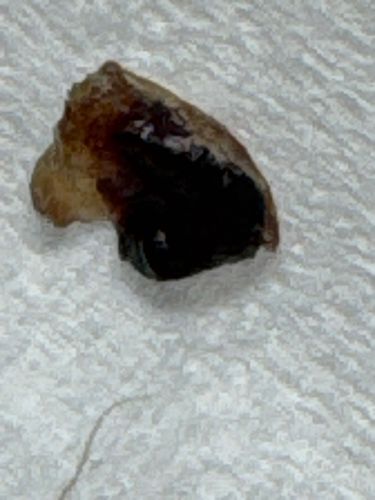Cockroach (likely American or Oriental Cockroach based on color and visible segment)
Scientific Name: Periplaneta americana (American Cockroach) or Blatta orientalis (Oriental Cockroach) are possible candidates given the image, but definitive identification is difficult from a partial, possibly crushed specimen.
Order & Family: Blattodea, Blaberidae/Blattidae
Size: Depending on the exact species, common pest cockroaches range from 1 to 2 inches (25-50 mm) in length for adults.

Natural Habitat
Cockroaches prefer warm, humid, and dark environments, often found indoors in kitchens, bathrooms, basements, and drains. They infest homes, restaurants, hospitals, and other buildings. Outdoors, they can be found in sewers, leaf litter, and under rocks, especially in tropical and subtropical regions.
Diet & Feeding
Cockroaches are omnivores and scavengers. They will eat almost anything, including food scraps, decaying organic matter, paper, books, fabric, and even other dead insects. They are particularly attracted to starches, sugars, and fatty foods.
Behavior Patterns
Cockroaches are primarily nocturnal, hiding in cracks and crevices during the day and emerging at night to forage for food. They are social insects and can often be found in groups. They are known for their rapid reproduction rate, with females laying egg capsules (oothecae) containing multiple eggs. They can run very quickly and are agile.
Risks & Benefits
Risks: Cockroaches can carry and spread various bacteria, pathogens, and allergens, potentially contaminating food and surfaces. They can trigger allergies and asthma symptoms in sensitive individuals. They are considered pests due to their unsanitary habits and rapid reproduction. Benefits: In certain ecosystems, some species of cockroaches play a role in decomposition and nutrient cycling, although typically not the species found infesting human habitations.
Identified on: 9/4/2025